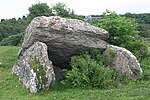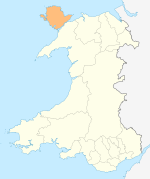St Mary's Church, Llanfair Mathafarn Eithaf

St Mary's Church, Llanfair Mathafarn Eithaf is a small medieval church in Anglesey, north Wales. The earliest parts of the building, including the nave and the north doorway, date from the 14th century. Other parts, including the chancel and the east window, date from the 15th century. It is associated with the Welsh poet and clergyman Goronwy Owen, who was born nearby and served as curate here. He later travelled to America to teach at The College of William & Mary, Virginia. The church is still in use for worship, as part of the Church in Wales, as one of three churches in the combined parish of Llanfair Mathafarn Eithaf with Llanbedrgoch with Pentraeth. It is a Grade II* listed building, a national designation given to "particularly important buildings of more than special interest", because it is a "good rural church retaining substantial medieval fabric."
Excerpt from the Wikipedia article St Mary's Church, Llanfair Mathafarn Eithaf (License: CC BY-SA 3.0, Authors, Images).St Mary's Church, Llanfair Mathafarn Eithaf
Llain Wen,
Geographical coordinates (GPS) Address External links Nearby Places Show on map
Geographical coordinates (GPS)
| Latitude | Longitude |
|---|---|
| N 53.32182 ° | E -4.243464 ° |
Address
St Mary
Llain Wen
LL74 8SJ , Llanfair-Mathafarn-Eithaf
Wales, United Kingdom
Open on Google Maps








